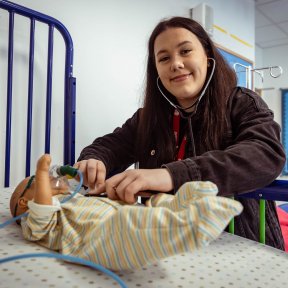Our students can go into these careers
You will be taught by highly experienced staff who have worked within the health, science and social care industry and are experts within their field.
We have a fully-equipped ward, complete with resuscitation mannequins, which you will use during role play activities.
We work alongside over 200 health and social care providers to support work placement and future employment opportunities for our students.
You can take part in simulated activities with health and social care providers, such as National Health Service and local care homes.
The Health, Science and Social Care industry is one of the largest in the UK and offers a wide and varied range of job opportunities.
We offer a FdSc Professional Practice in Health and Social Care HTQ and a Higher Apprenticeship in Assistant Practitioner (Health) allowing you to get a higher level qualification while you work.
The Health, Science and Social Care Professions department is based in our Old Mill Lane campus. Visit our Campus page to explore our state-of-the-art facilities and take a 360 tour.
Careers guidance: see what careers are available in the Health and Social Care and Applied Science sectors. Use our online careers tool, Career Coach, to find out what your next steps could be.
Tutorial Support and Additional Learning Support (ALS)
Enrichment (extracurricular activities)
Free or concessionary travel to get to College.
Enterprise – support to set up a business

Our study programmes provide you with knowledge, experience and opportunities which can provide a route to such careers as: Nursing, Social Work, Emergency Services, Youth and Community work.
See what careers are available in the Health and Social Care and Applied Science sectors.
Salary
Employed
Openings
View more information about this career on Career Coach